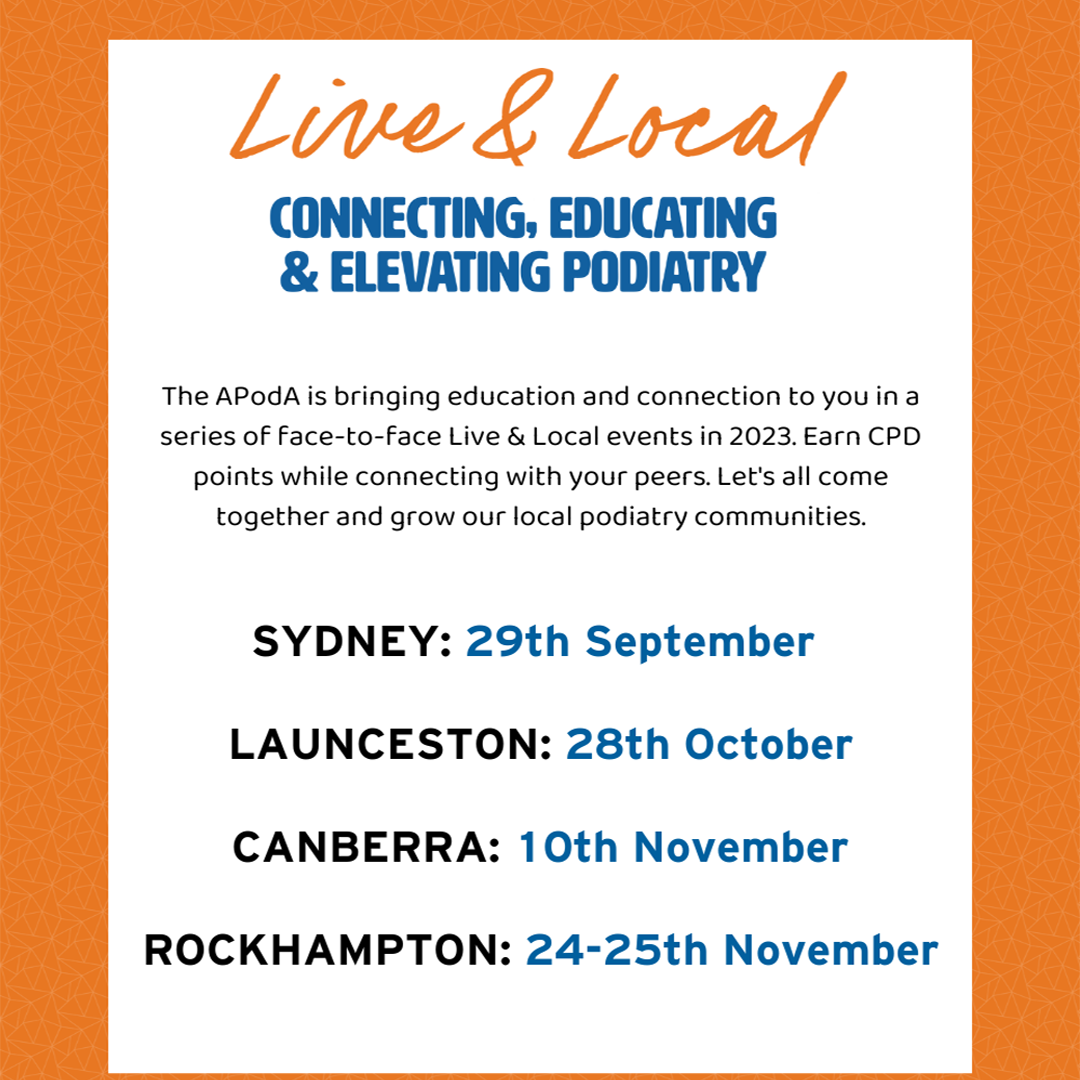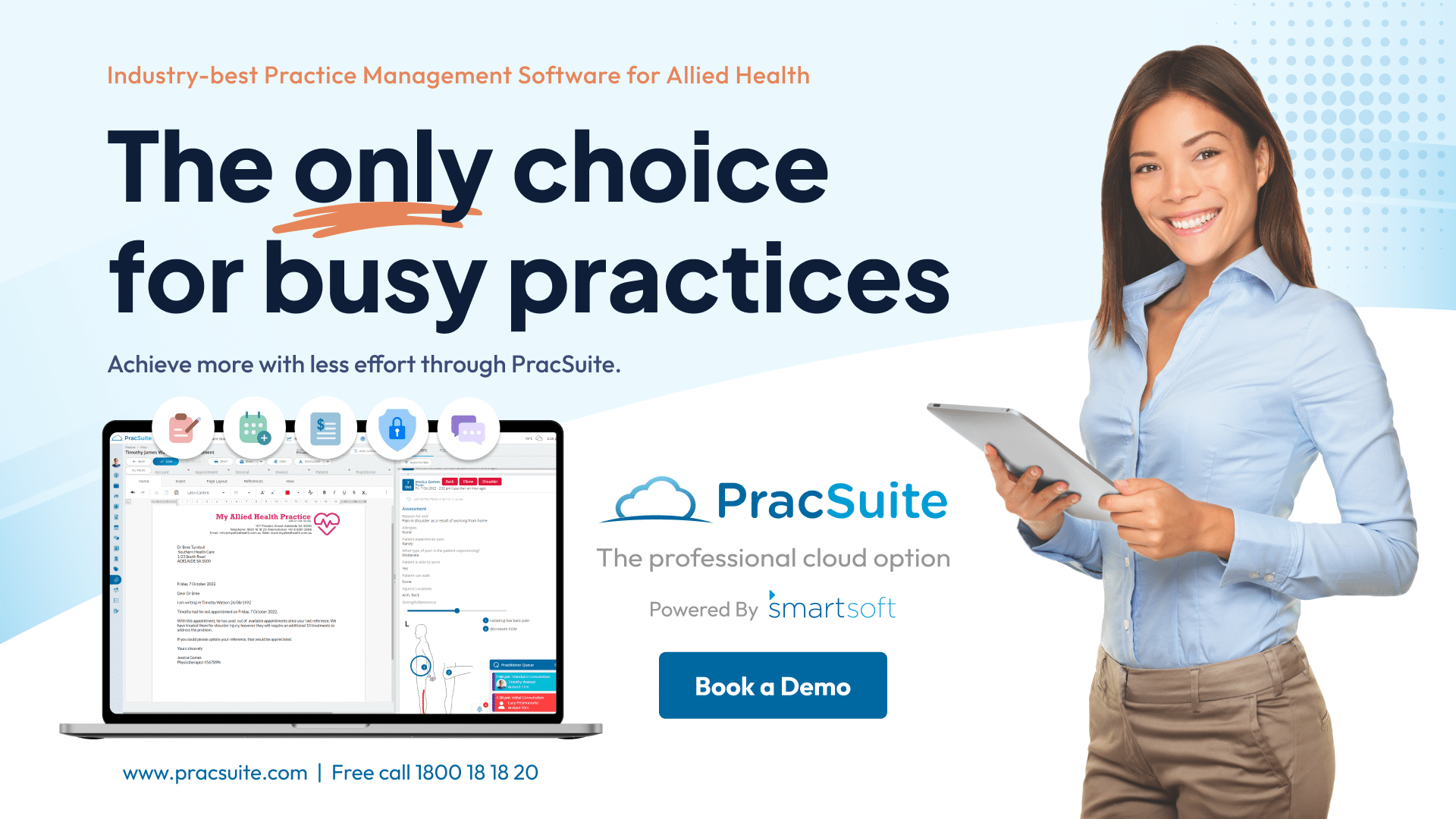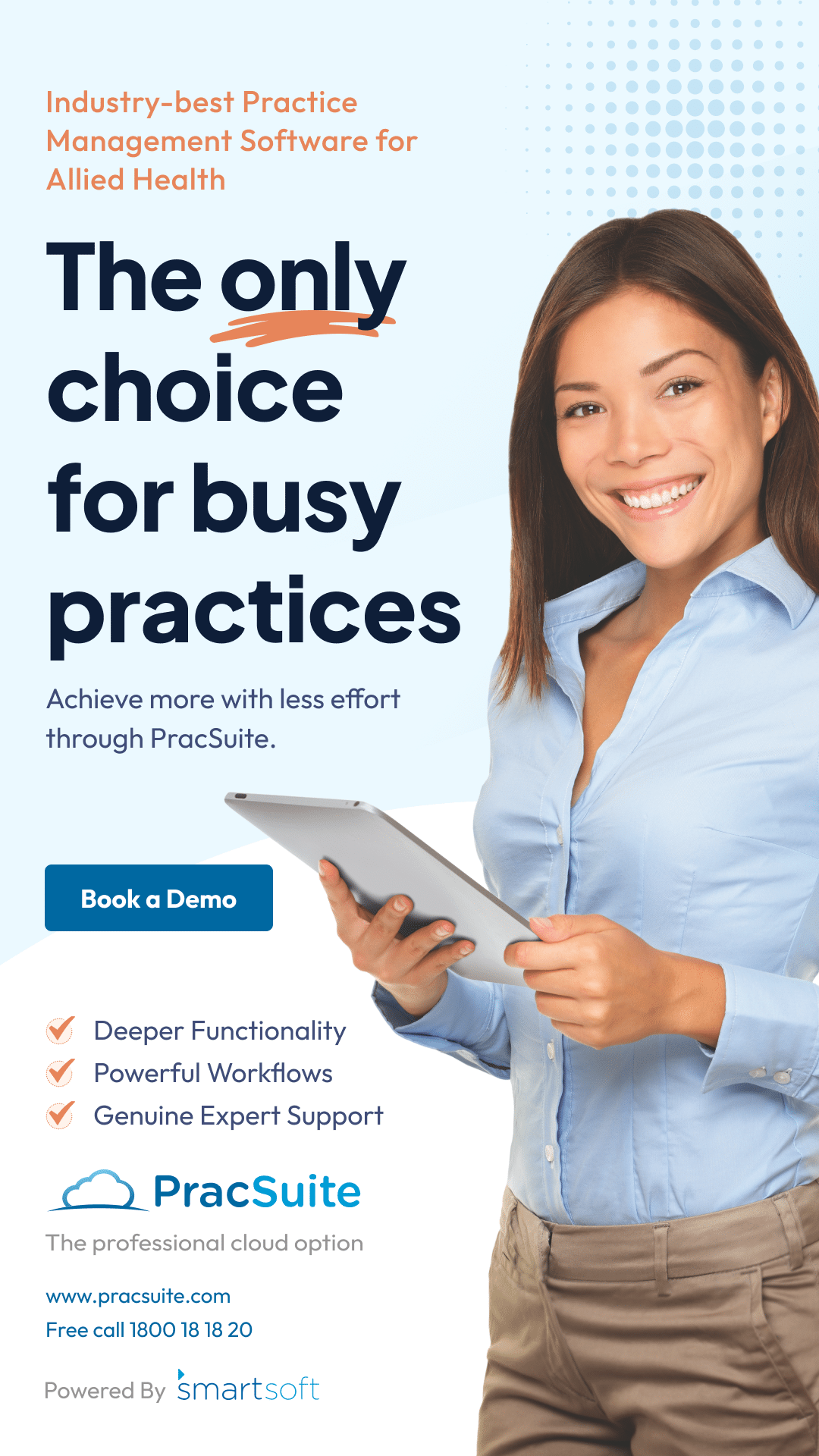
Do you offer a full PAD assessment at your clinic? Consider the 3Ps approach
Martin Fox works in an NHS commissioned, podiatry-led, community-based lower limb vascular service in Manchester, England. He comes from a general podiatry and high-risk lower limb career background. Martin spoke passionately to a packed auditorium at the 2023 Australian Podiatry Conference. The topic in question was peripheral arterial disease (PAD) – and the critical role podiatrists play in diagnosing it before it is too late, for life or limb.
How would you respond to the questions Martin asked the conference delegates?
On a balmy Brisbane morning, despite the winter months, Martin Fox posed the following questions to hundreds of Australian Podiatry Conference attendees. These questions followed a long-haul flight Martin made from Manchester, such is his purpose to spread the importance of PAD assessments to all corners of the globe and all types of podiatrist; especially those working in community settings who may not particularly see themselves as vascular champions.
During Martin’s presentation, delegates were invited to stand and only sit down once they answered ‘no’ to the following questions. Around 50% of podiatrists sat in response to question 2C and only three podiatrists remained standing after question 2E was asked.
- Do you provide leg or foot treatment to people aged 40 and above? YES/NO
- If so, do you assess and document your patient, before you run a new assessment or treat them, by doing the following:
- Palpating foot pulses? YES/NO
- If those foot pulses are non-palpable or weak, do you get your doppler out and have a listen? YES/NO
- If you hear a monophasic or ‘whooshy’ pulse, or the patient has calf-induced pain, do you perform an ankle brachial pressure index test (ABPI)? YES/NO
- If the ABPI comes back as elevated (1.3 or more) or tissue loss is evident (such as a wound on the foot), do you take systolic toe pressures? YES / NO
- If these diagnostic tests confirm peripheral arterial disease (PAD) or ischemia, do you check popliteal and femoral pulses? YES / NO
How did you fare, after reading through these questions?
Martin shared his further thoughts, for podiatrists to take note:
“We know that as podiatrists, we are potentially able to diagnose lower limb conditions and relieve foot and lower limb pain. But what about aiding survival? How many of us see ourselves as being directly able to prevent heart attacks, strokes, amputations and premature deaths?
We see a lot of campaigns out there about early or critical signs of heart attack and stroke, to raise public awareness, but relatively little is known or promoted effectively to the public about early or critical signs of PAD.
In fact PAD is often ‘played down’ as presenting with mild ailments like cold toes, chilblains and achy legs. Yet PAD is basically heart disease of the leg; claudication is angina of the leg. It needs the same cardiovascular management to prevent the same outcomes. PAD associated heart attacks, strokes and early death are more common than associated amputations.
As podiatrists, we can diagnose PAD and we can champion our role in changing all these adverse outcomes for lives and limbs. Every time you feel a foot pulse, you are tied into that diagnostic journey, with a potentially critical role to play.
The stakes are high. Mortality rates for people with lower limb conditions, such as PAD, are comparable to major cancer outcomes. Yet how many patients know that the pain in their leg might be PAD, putting them at an increased risk for heart attack and stroke? And how many patients know which simple and effective treatments can best help to reduce these risks?
The huge elephant in the podiatry room is that podiatrists come out of university and are able to do complex assessments and interventions involving the feet. Yet we are not utilising simple, structured clinical diagnostics to exclude or confirm PAD, particularly in the population at risk that we see in many of our clinics. How do our vascular skills as a profession fare, compared to global consensus on best assessment?
Studies show that most of us are NOT doing ABPIs and NOT taking toe brachial pressure index tests (TBPIs). Most Australian podiatrists are using pulse palpation and doppler insonation in isolation, as a minimum. This is out of date and unsafe, bearing in mind the ageing and multi-condition population of people that we often see in 2023.
Simple, quick systolic pressure testing in the ankles or toes is NOT being carried out, with the main reasons being given as a lack of time, equipment and / or experience, or confidence.
If we don’t use these skills often, like any skill neglected, we lose them. And yet these tests, alongside pulse palpation plus Doppler insonation, give the most reliable diagnostic accuracy when combined with clinical suspicion.
In short: If pulses are weak and the Doppler sounds whooshy, take some pressures.
History + pulse palpation + Doppler phase insonation + systolic pressures = PAD confirmed or excluded.
The 3Ps assessment approach is quick, simple and backed by consensus in national and international clinical guidelines. To recap:
- Pulses – palpate them
- Phases – Doppler insonation and waveform interpretation
- Pressures – systolic toe, ankle and brachial.
Adding a systolic ankle or toe pressure to our existing usual vascular checks of pulse palpation or Doppler insonation, can take as little as five minutes per limb, once we are confident with use of Doppler and sphyg cuffs or Photoplethysmography (PPG) sensors.
Improving our skills and habits in using this approach sets us up for building confidence to:
- Enable safe, proactive podiatry practice to people with higher risk limbs
- Triage people with PAD for cardiovascular and limb-protecting interventions
- Discuss the disease more confidently and consistently with people in our podiatry clinics.
Which leads to our next major challenge as podiatrists: We need to learn how to explain the importance and reality of a PAD diagnosis to people in a way that doesn’t cause fear, but empowers them to make positive changes in their lives earlier in this serious disease. This can effectively help to prevent or delay disease progression.
Podiatrists can play a significant role in directly detecting and improving five-year morbidity and mortality outcomes associated with PAD. The role of a podiatrist can be life-saving as well as limb protecting.”
Next steps
With Martin’s advice now fresh in our minds, it’s over to you to work towards completing each listed action, from 2A right down to step 2E, as your ongoing goal. This is indeed a relatively simple and worthwhile goal to pursue. Equally important is to share this knowledge widely amongst your podiatry peers.
We just have to give ourselves permission to do this, to reinforce some core skills and build our confidence. We can become the vascular leaders in lower limb healthcare that we really should be.
Further reading to help enable this
- British Vascular Society The Vascular Society of Great Britain & Ireland
- How podiatrists can save people’s hearts
- Connect with Martin on Twitter @martinfox2000
- Peripheral Vascular Disease Made Easy channel on YouTube
- Peripheral Arterial Disease Clinicians Network on Facebook
- International Working Group of the Diabetic Foot – peripheral arterial guidelines
Use ChatGPT to streamline your emails
AD

The importance of your website
In last month’s launch of this communication and branding series, the focus was on making your brand stand out; whether you’re a podiatrist working in a private practice, in a community centre, or based in a hospital.
This month we’re talking about your website. Perhaps you’re looking to update your clinic’s website, or you want to build a simple and cost-effective website for yourself that serves as your digital business card. Read on to see how you can make this simple and effective.
First up, what kind of website are you after? Here’s some parameters to help guide your decision.
- Your target audience – are you focused on connecting with your local community? Or do you want to set up a digital platform to mostly collaborate with other allied health professionals? Or do you want to attract telehealth patients from across Australia? These factors will help you to decide how big or small, or complex or simple you want to go with your website.
- Your business capabilities – do you have staff who need to login to the back end? Or have you considered how your website will integrate with your practice management software? Or perhaps you’re looking for a simple website with limited functionality since you only want to share your bio and contact details? Factor these decisions into the very start of your web build (or web refresh).
- Ease of use – regardless of how complex your website needs to be at the back end, make sure it is super simple to use. Again, this requires you to go back to your target audience to frame your decision making around your visitors. Put yourself in their shoes (pardon the pun) and consider their user experience. What is the first step they are likely to take when they arrive at your website? Is your site mobile responsive? How easily can visitors access critical information? Don’t be afraid to trial test landing pages with trusted contacts for feedback.
- Price range – Don’t be tricked into opting for a cheaper upfront cost to only later be stung with higher monthly fees. Look into the overall costs involved in your website’s creation and its ongoing presence. Consider hosting costs, domain name costs, email integration, pop up messages; it all stacks up.
After you have reflected on your Practice Management Software of choice (and considered which web platforms are most suited to this), a good first port of call is to look at the self-build sites. Popular self-build websites include WIX, WordPress, Squarespace and more. These types of platforms feature drag and drop functionalities, along with editable templates, which means you can single-handledly build your own website without needing to engage a professional firm.
However, if you would rather have a website built (or refreshed) for you, a google search in your local area will bring up plenty of web designers, or you may find your future web designer on a platform such as UpWork.
Whichever path you opt to take, ensure:
- Your branding is consistent. Fonts, colours and design elements are all part of your broader brand, and they must be consistent throughout your website. Remember to also choose legible fonts and maintain a good font size for easy reading. Use font variations sparingly for emphasis (such as bold, italic and so forth).
- Your values shine through. Don’t forget to reflect on your personal or professional values. Make sure these shine through your written content. This is what makes your business or personal brand unique.
- Keep each web page action-oriented. Known as a ‘Call to Action’, each page of your website should lead your visitor to a clearly identified next step, such as ‘Book now’, or ‘Contact us’.
Next month in this series, we delve deeper into the importance of Google and SEO (Search Engine Optimisation) when you market yourself (or your business) online.
R U OK?

Do you need entity insurance?
Imagine if a complaint was made against a member of your staff, and your business name was included in the complaint. Your business could be held liable in this situation. As a podiatrist, there are several types of cover that can help protect you and/or your business. This includes entity insurance. Here’s what you need to know.
In this article, BMS – the Australian Podiatry Association’s (APodA’s) dedicated insurance partner – explains what entity insurance is, how to add it to your APodA Member Insurance policy, and the difference between various types of cover that help protect you and your business.
Plantar fibromatosis in focus
The latest news at Diabetes Feet Australia

Understanding unfair dismissal

The ability to make an unfair dismissal (UD) claim acts as a safeguard to prevent employees from being unfairly, unreasonably, or harshly dismissed.
There may come a time when an employer is faced with the unfortunate situation of having to address a UD application. And the question is soon raised around whether the employer has done everything correctly in the lead up to the termination.
This article aims to provide an understanding of the UD process and offer guidance to employers on how adequately prepare for this procedure. The insights may also be of use to employees, to better understand their rights within this context.
Read more.













